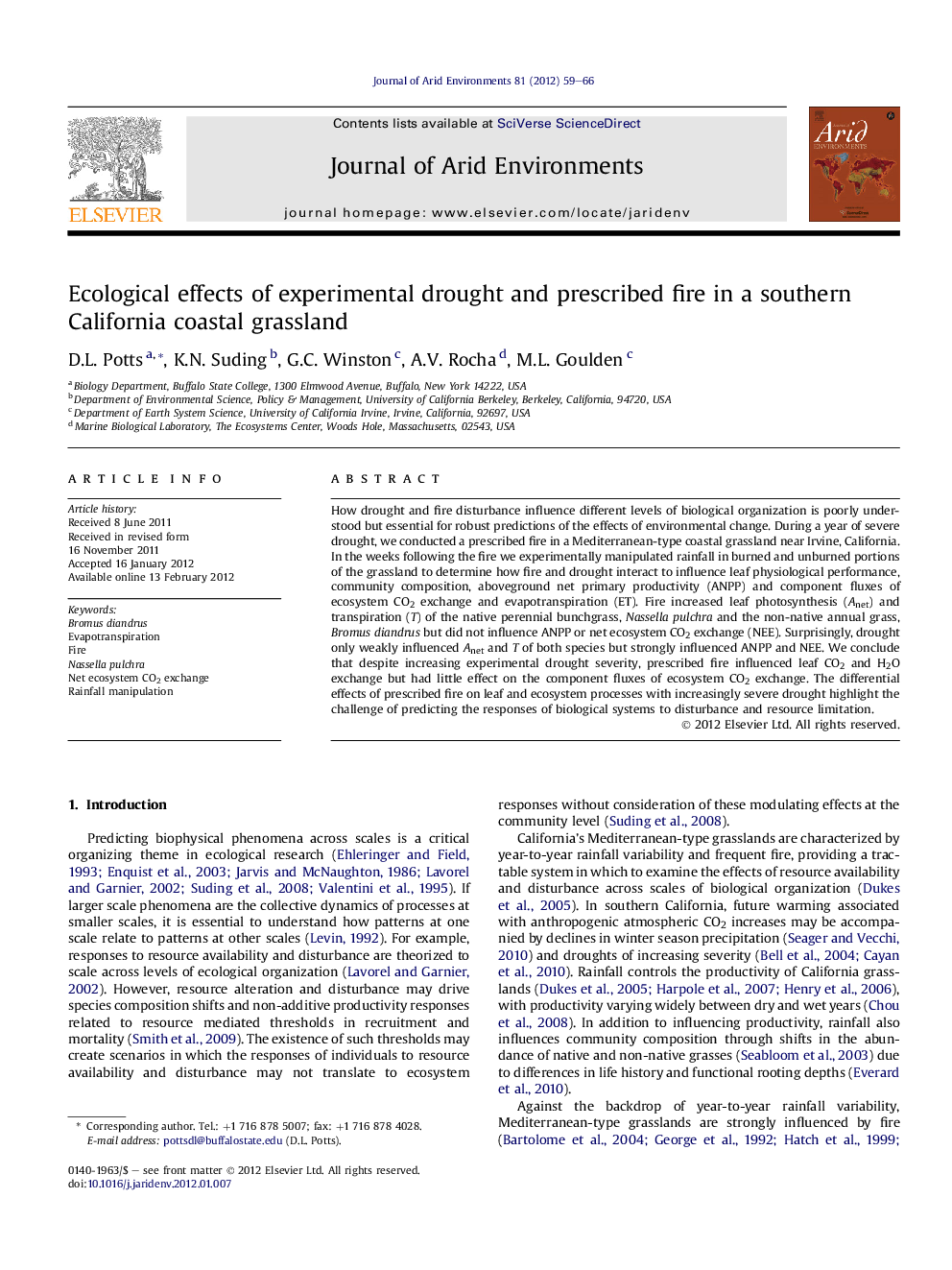| Article ID | Journal | Published Year | Pages | File Type |
|---|---|---|---|---|
| 4393351 | Journal of Arid Environments | 2012 | 8 Pages |
How drought and fire disturbance influence different levels of biological organization is poorly understood but essential for robust predictions of the effects of environmental change. During a year of severe drought, we conducted a prescribed fire in a Mediterranean-type coastal grassland near Irvine, California. In the weeks following the fire we experimentally manipulated rainfall in burned and unburned portions of the grassland to determine how fire and drought interact to influence leaf physiological performance, community composition, aboveground net primary productivity (ANPP) and component fluxes of ecosystem CO2 exchange and evapotranspiration (ET). Fire increased leaf photosynthesis (Anet) and transpiration (T) of the native perennial bunchgrass, Nassella pulchra and the non-native annual grass, Bromus diandrus but did not influence ANPP or net ecosystem CO2 exchange (NEE). Surprisingly, drought only weakly influenced Anet and T of both species but strongly influenced ANPP and NEE. We conclude that despite increasing experimental drought severity, prescribed fire influenced leaf CO2 and H2O exchange but had little effect on the component fluxes of ecosystem CO2 exchange. The differential effects of prescribed fire on leaf and ecosystem processes with increasingly severe drought highlight the challenge of predicting the responses of biological systems to disturbance and resource limitation.
► We manipulated drought severity and fire in a Mediterranean-type grassland. ► We measured physiological, community, and ecosystem responses to drought and fire. ► Fire and increasing drought severity did not interact to influence biological processes. ► Physiological responses are modulated by community shifts to influence ecosystem function.
